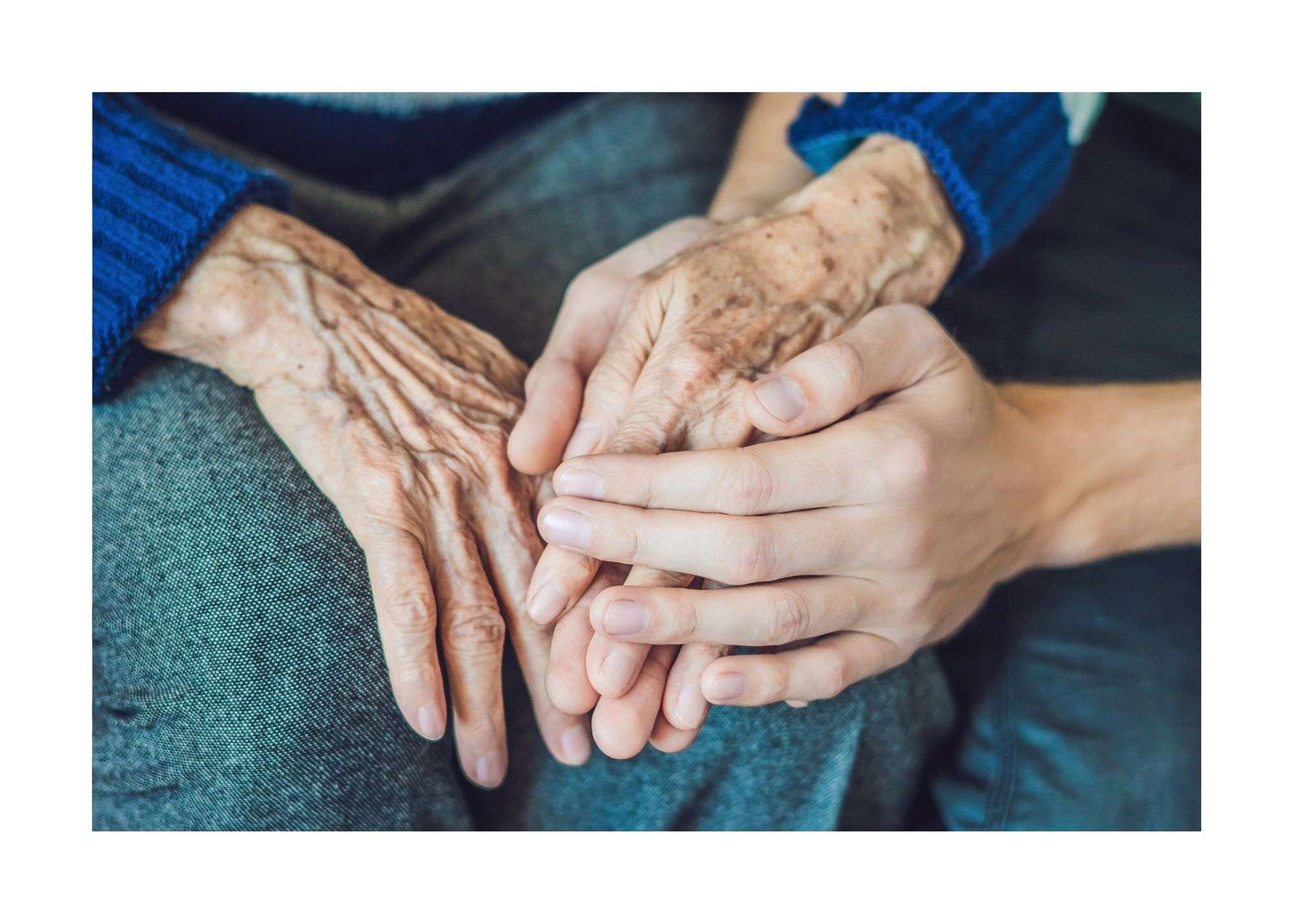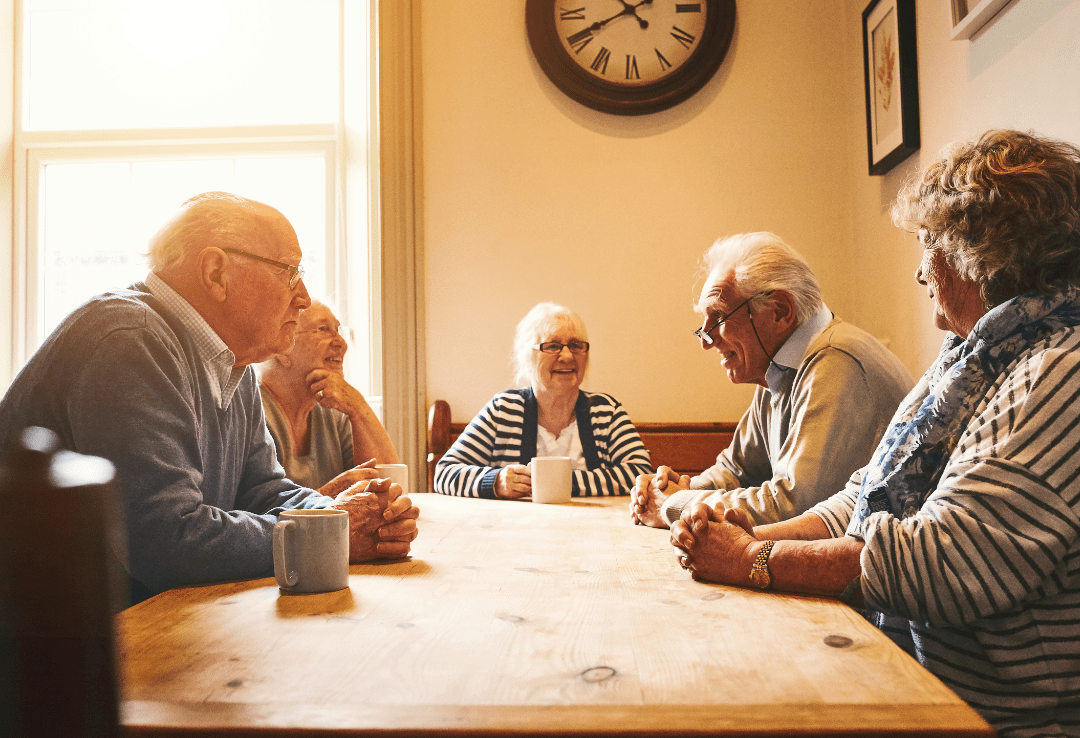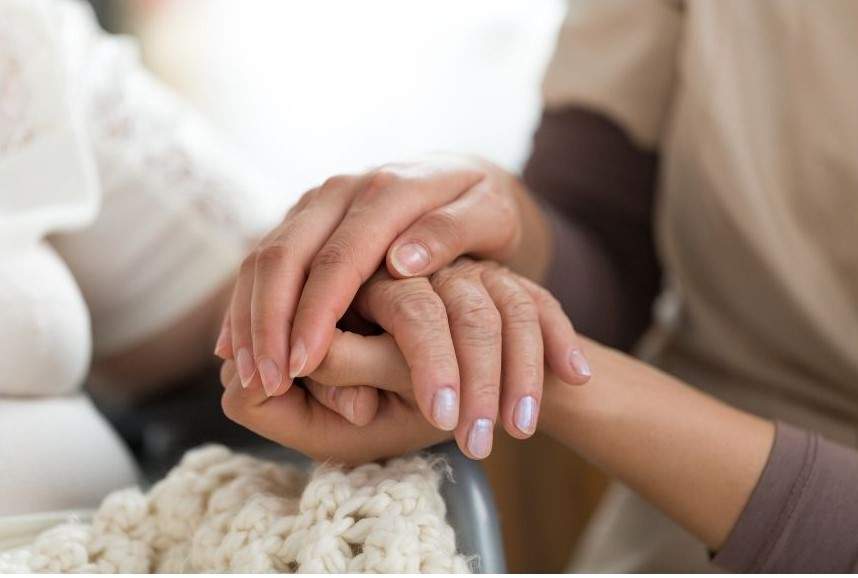Community engagement plays a vital role in the well-being of older adults, offering not only social benefits but also physical and mental health advantages. Being involved in a vibrant community combats isolation, which can negatively affect health, and fosters a sense of belonging that enriches daily life.
Continue readingWhat is Hospice Care? And why is it so important?
Hospice care provides physical, psychological, social and spiritual support for those who are in their last stages of a terminal illness. Typically, hospice care is suggested by a healthcare provider when a patient has six months or less to live. Many individuals who are experiencing terminal and chronic conditions such as cancer, heart disease, dementia and kidney failure use hospice as a way to prepare for the last stages of their journey. In addition, hospice care can help families cope with the forthcoming loss of a loved one through counseling and respite care. While hospice care is often focused on meeting the physical needs of a patient, many people are unaware of its robust offerings for both the individual receiving care and their family members.
What Does Hospice Care Provide?
Many hospice care providers take different approaches to services and types of support, however all hospice providers are required to offer certain services. According to the American Cancer Society, here are a few of the most common types of hospice services provided for patients:
Palliative care
Palliative care, or symptom management, is provided as a part of hospice and is designed to prevent or treat any symptoms related to an individual’s illness. Palliative care helps address any pain or discomfort in order to allow the patient to enjoy the last stage of life with their loved ones. The main goal of palliative care is to ensure the patient is comfortable and knows their options.
Home care
Most hospice care is given directly from an individual’s home. However, there may be some situations where hospice care needs to be given from a hospital or long-term care facility. A hospice team can arrange for care no matter where you are, and will be involved with your care plans and family members.
Spiritual care
In addition to managing pain and controlling symptoms, hospice care also provides an individual with spiritual or religious care, depending on their beliefs and preferences. Spiritual care can help an individual prepare to say goodbye to their loved ones to with planning a religious or spiritual ceremony and burial plans.
Family meetings
A hospice care team will meet regularly with family members and keep them informed about their loved one’s condition and help manage expectations. These meetings allow family members to discuss their feelings, ask questions and prepare for the death of their loved one. In addition, the hospice care team will share daily updates and make routine visits.
Coordination of care
The hospice care team is responsible for coordinating care for the individual and sharing information to those involved in providing medical care. This might include an inpatient facility, pharmacists, clergy and even funeral directors. Hospice care teams are also available anytime during the day or night if a question or problem were to arise.
Respite care
Caregiving can be extremely challenging for spouses and other family members. That’s why hospice services provide respite care. During respite care, an individual is cared for in the hospital or a nursing home so their caregivers can rest at home, attend to other responsibilities or simply take a break.
Bereavement care
After a loved one dies, the hospice care team will provide support to the family during the grieving process. Trained volunteers, clergy members or professional counselors will provide visits, phone calls, support groups or counseling sessions to members of the family. The hospice care team can also provide resources and other professional care when needed.
Who makes up a Hospice Care Team?
According to the Mayo Clinic, a hospice care team is made up of professionals ranging from healthcare providers to volunteers and home health aides. If you or your loved one is receiving hospice care, here’s who you can expect to be on your care team:
- Doctors. Those who receive hospice care will be under the supervision of a primary care doctor, hospice doctor or medical director. Each patient will be able to choose their primary doctor who will oversee their care.
- Nurses. Nurses will provide care in any setting, depending on where the individual is receiving hospice services. Nurses are also responsible for coordinating the hospice care team.
- Home health aides. Home health aides provide additional support with daily activities such as bathing, dressing, eating and other routine tasks.
- Spiritual counselors. Chaplains, priests, lay ministers and other spiritual counselors or advisers can help provide spiritual care and guidance to the individual receiving care and their family members.
- Social workers. Social workers provide counseling, support, and referrals to other support systems and resources both for the patient and their families.
- Pharmacists. Pharmacists provide medication management and offer suggestions on how to best relieve symptoms and manage pain.
- Volunteers. Trained volunteers often provide a variety of services including respite care, transportation services and help with additional needs.
- Other professionals. Speech, physical and occupational therapists can provide therapy when needed.
- Bereavement counselors. Trained bereavement counselors offer support and guidance to family members after the death of their loved one.
Benefits of Hospice Care
Watching a loved one go through their final stages of life is hard for everyone involved. Hospice care provides comprehensive care that supports both the individual and their family members through this difficult time. While hospice can be provided in a hospital or long-term care facility, it can also be provided in the comfort of one’s own home, which allows patients to feel more comfortable and relaxed. Hospice also provides a comprehensive care plan, which takes the burden off of family members and allows them to spend quality time with their loved one without worry for the future. In addition, hospice care can be personalized to fit the needs of the individual and support their wishes for the future.
Downsizing Guide for Seniors
It’s common for seniors in their sixties to consider downsizing to a smaller home or moving to a senior living community. In fact, 51% of retirees over the age of 50 move into smaller homes. However, this decision can be a difficult one. Many older adults are faced with leaving their family home and the memories that come with it. While this can be challenging, choosing to downsize can make life easier and safer for many aging adults and their families. There is no one-size-fits-all approach to successful downsizing. While some adults may choose to live on their own, others may find comfort in residing in a Continuing Care Retirement Community that offers all levels of care such as independent living, assisted living, and skilled nursing. In addition to deciding where to move, older adults must also decide if the timing is right.
Is it Time to Downsize?
Older adults choose to downsize for a number of different reasons. For some, aging is expensive, and downsizing provides a viable option to cut costs and reduce monthly expenses by lowering or eliminating mortgage payments, home insurance and property taxes. For others, things like stairs, multiple levels, a large yard and long walkways can become dangerous and limit one’s ability to age in place. No matter the reason for downsizing, choosing where and when to move are complicated decisions. If you or your loved ones are contemplating downsizing, there are some basic questions that can help you decide if it’s the right time to downsize:
- Do you have unused rooms in your home?
- Can you afford to stay in your current home for 10 or 20 years down the road?
- Is your yard easy to maintain? Can you safely complete household tasks?
- Do you feel isolated?
- Do you have too much stuff to manage?
At some point, you may realize that your home isn’t the safest or most economical place to age. If you have a lot of wasted space or have difficulty maintaining your family home, it could be the right time to downsize.
Where to Downsize?
There are two very common options when it comes to choosing where to downsize. Many older adults are faced with deciding between moving to a residential community or aging in place. Generally speaking, residential communities include independent living, assisted living, or nursing homes. In addition, Continuing Care Retirement Communities, such as Maple Knoll Village, offer all three types of care. In a residential community, residents are not responsible for yard work, maintenance, and do not have to make mortgage payments. Traditionally, those living in a residential community pay a monthly fee that includes utilities, housekeeping and even some meals. Most communities offer onsite medical care, memory care, and offer social activities on and off-campus.
The second option, aging in place, can be an attractive option for those wanting to live independently for as long as possible. In addition, older adults often choose to age in place when they are in excellent health or if the facilities in their area have poor reputations or are too expensive. For those aging in place with minimal needs, a smaller home with less chores may be an attractive option. However, it’s important to consider how many years they are likely to still be independent. For those with complex medical needs, aging in place can be more difficult and require hiring outside help to provide care or relying on the support of friends and family members.
Tips for Stress-Free Downsizing
Once you decide where to go, you’ll have to start the physical act of downsizing your belongings. While it may feel overwhelming, there are many ways to make downsizing feel like a manageable task. If you or a loved one has a potential downsize in the future, here are some tips to keep in mind:
- Start preparing early. Downsizing always takes longer than you might think. Giving yourself plenty of time to sort and pack your items will make transitioning into a new space much easier. In addition, moving companies often need advanced notice, especially if you are moving out of state.
- Prioritize communication. It’s not uncommon for adult children to notice their parents having difficulty maintaining their home. If this happens, adult children may need to approach the topic of downsizing with their parents. Adult children may consider offering to help clean out the garage or sort through items in storage. As the topic continues, it’s important for children to reassure their parents that they have a say in the matter.
- Set realistic goals. Downsizing can feel like an enormous task. The key to successful downsizing is to set small and attainable goals. You may consider starting with one room or one closet at a time. Before you begin, make sure you have all the necessary items like boxes, tape and markers.
- Sort your items. Experts agree that sorting your items into separate categories for taking with you, gifting, selling, donating and throwing away can help you stay organized and efficient.
- Keep the memories! One of the hardest parts of downsizing is having to part with precious memories and keepsakes. However, it’s possible for many items to be compressed. For example, photo albums and home movies can be stored onto DVDs or hard drives for easy storage. If you have a collection of items, consider keeping your favorites and donating the rest.
Making the Move to Maple Knoll Village
Our residents agree that one of the most difficult parts of transition into a retirement community is choosing how to downsize. However, the amenities, peace of mind, and sense of safety that comes with living at Maple Knoll Village is well worth the move. To speak learn more about life at Maple Knoll Village or to schedule a tour, please contact us at 513-782-2717.
Financial Resolutions for the New Year
It’s not too late to make a resolution for 2022. While many people choose to focus on health-related resolutions, January is a great time to reevaluate your finances and gain financial control of the coming year. According to U.S. news, nearly 80% of New Year’s resolutions fail by the second week of February. However, these four financial resolutions are S.M.A.R.T. (Specific, Measurable, Attainable, Relevant, and Timely) and are simple enough to stick with all year long.
#1 Track and Prioritize Your Spending
Whether you’ve spent your entire life budgeting your money or are looking to get back on track, tracking your spending is a good place to start. You might consider starting by reviewing your spending habits over the last year, identify where you seem to spend the most money, and brainstorm ways you’d like to cut back. You can track your weekly and monthly expenses by hand, spreadsheets, or by using an app on your smartphone.
#2 Meet with Your Financial Advisor
Your financial advisor is the best person to give you advice and help you set financial goals because of their familiarity with your specific financial situation. You might consider reviewing your investment allocations and together set goals for the coming year. Some of your goals could include giving to your favorite charities, reevaluating your will, or making financial plans for a vacation in the next year.
#3 Plan for Health Care Expenses
Health care is not only expensive, but it’s hard to predict exactly what your needs will be in the next several years. That’s why it’s a good idea to have both proper coverage and additional savings that can cover unexpected expenses. The best way to plan for your health care needs is by being proactive and staying healthy. Here are a few ideas to help keep you safe and healthy, while also avoiding hospital visits.
- Use your pendant. In case of a fall or injury, your pendant is designed to alert Security and send help to you as soon as possible.
- Get familiar with your health insurance. Whether you’ve just changed your Medicare plan or can’t remember the specifics of your policy, now is a good time to review the fine print.
- Remember to get your exercise. Walking, building your muscles, and eating a well-balanced diet will help keep you safe, while also protecting you from unseen health care expenses.
#4 Protect Your Credit
Unexpected expenses can happen to anyone, no matter how prepared or careful you are with your finances. If something does happen, and debt is unavoidable, you’ll want to be sure your credit history is in a good place in the event you have to borrow. Here are a few ways you can protect and improve your credit score:
- Make automatic payments for your monthly bills. This allows you to pay your credit card bills on time without having to write a check or pay online. One late payment can hurt your credit score.
- Understand the safety measures set on your credit card and bank accounts. In the event your bank account or credit card is compromised, you’ll want your bank to call you and immediately freeze your card. You might consider keeping a contact number for your bank in a safe and accessible place.
However you decide to prepare for the New Year, we wish you health and happiness all year long!
Assisted Living vs. Private Duty Care: How to Make the Most of your Money
What is Hospice Care? And why is it so important?
Hospice care provides physical, psychological, social and spiritual support for those who are in their last stages of a terminal illness. Typically, hospice care is suggested by a healthcare provider when a patient has six months or less to live. Many individuals who are experiencing terminal and chronic conditions such as cancer, heart disease, dementia and kidney failure use hospice as a way to prepare for the last stages of their journey. In addition, hospice care can help families cope with the forthcoming loss of a loved one through counseling and respite care. While hospice care is often focused on meeting the physical needs of a patient, many people are unaware of its robust offerings for both the individual receiving care and their family members.
What Does Hospice Care Provide?
Many hospice care providers take different approaches to services and types of support, however all hospice providers are required to offer certain services. According to the American Cancer Society, here are a few of the most common types of hospice services provided for patients:
Palliative care
Palliative care, or symptom management, is provided as a part of hospice and is designed to prevent or treat any symptoms related to an individual’s illness. Palliative care helps address any pain or discomfort in order to allow the patient to enjoy the last stage of life with their loved ones. The main goal of palliative care is to ensure the patient is comfortable and knows their options.
Home care
Most hospice care is given directly from an individual’s home. However, there may be some situations where hospice care needs to be given from a hospital or long-term care facility. A hospice team can arrange for care no matter where you are, and will be involved with your care plans and family members.
Spiritual care
In addition to managing pain and controlling symptoms, hospice care also provides an individual with spiritual or religious care, depending on their beliefs and preferences. Spiritual care can help an individual prepare to say goodbye to their loved ones to with planning a religious or spiritual ceremony and burial plans.
Family meetings
A hospice care team will meet regularly with family members and keep them informed about their loved one’s condition and help manage expectations. These meetings allow family members to discuss their feelings, ask questions and prepare for the death of their loved one. In addition, the hospice care team will share daily updates and make routine visits.
Coordination of care
The hospice care team is responsible for coordinating care for the individual and sharing information to those involved in providing medical care. This might include an inpatient facility, pharmacists, clergy and even funeral directors. Hospice care teams are also available anytime during the day or night if a question or problem were to arise.
Respite care
Caregiving can be extremely challenging for spouses and other family members. That’s why hospice services provide respite care. During respite care, an individual is cared for in the hospital or a nursing home so their caregivers can rest at home, attend to other responsibilities or simply take a break.
Bereavement care
After a loved one dies, the hospice care team will provide support to the family during the grieving process. Trained volunteers, clergy members or professional counselors will provide visits, phone calls, support groups or counseling sessions to members of the family. The hospice care team can also provide resources and other professional care when needed.
Who makes up a Hospice Care Team?
According to the Mayo Clinic, a hospice care team is made up of professionals ranging from healthcare providers to volunteers and home health aides. If you or your loved one is receiving hospice care, here’s who you can expect to be on your care team:
- Doctors. Those who receive hospice care will be under the supervision of a primary care doctor, hospice doctor or medical director. Each patient will be able to choose their primary doctor who will oversee their care.
- Nurses. Nurses will provide care in any setting, depending on where the individual is receiving hospice services. Nurses are also responsible for coordinating the hospice care team.
- Home health aides. Home health aides provide additional support with daily activities such as bathing, dressing, eating and other routine tasks.
- Spiritual counselors. Chaplains, priests, lay ministers and other spiritual counselors or advisers can help provide spiritual care and guidance to the individual receiving care and their family members.
- Social workers. Social workers provide counseling, support, and referrals to other support systems and resources both for the patient and their families.
- Pharmacists. Pharmacists provide medication management and offer suggestions on how to best relieve symptoms and manage pain.
- Volunteers. Trained volunteers often provide a variety of services including respite care, transportation services and help with additional needs.
- Other professionals. Speech, physical and occupational therapists can provide therapy when needed.
- Bereavement counselors. Trained bereavement counselors offer support and guidance to family members after the death of their loved one.
Benefits of Hospice Care
Watching a loved one go through their final stages of life is hard for everyone involved. Hospice care provides comprehensive care that supports both the individual and their family members through this difficult time. While hospice can be provided in a hospital or long-term care facility, it can also be provided in the comfort of one’s own home, which allows patients to feel more comfortable and relaxed. Hospice also provides a comprehensive care plan, which takes the burden off of family members and allows them to spend quality time with their loved one without worry for the future. In addition, hospice care can be personalized to fit the needs of the individual and support their wishes for the future.
How Much Do You Know About Your Parent’s Health?
With nearly 10,000 baby boomers reaching retirement age every day, the demand for caregivers increases each year. According to a report from Families Caring for An Aging America, at least 17.7 million individuals in the U.S. are caring for an older adult with various health needs. For many families, this responsibility often falls on a family member, such as a spouse or an adult child. In fact, data suggests that more than half of older adults between the ages of 85 and 89 require a family member’s help because of health or other functional issues. However, many older adults require help much sooner than this. Other conditions which are common among older adults such as Alzheimer’s disease, stroke, heart-attack or heart-disease, and fall-related injuries can result in needing assistance with basic daily tasks. Sometimes the need for assistance is quite obvious and other times it can go unrecognized for long periods of time.
For long-distance adult children, it can be difficult to know when a parent needs extra support. Many older adults either learn how to hide their condition or don’t want to burden their children with asking for help. It’s not uncommon for adult children to be surprised by their parent’s condition after going long periods of time without visiting, especially due to the COVID-19 pandemic. It’s even more common for adult children to wonder why their parent isn’t asking for help when they need it.
Why isn’t your parent asking for help?
Whether your loved one is experiencing normal age-related forgetfulness or decreased mobility, it might come as a surprise when they don’t ask for help. However, there are a number of reasons why parents hesitate to ask their adult children for assistance:
- Denial. As humans, we can rationalize any situation no matter its severity. Even if your loved one is experiencing changes in their memory or physical health, they may not have accepted these changes yet. Instead, your parent might be placing blame on others around them.
- Cognitive decline. When adults develop Alzheimer’s or dementia, they may not realize that they are putting their safety at risk. In addition, it’s not uncommon for those with memory conditions to hide their symptoms from their loved ones.
- Fear of losing autonomy. Oftentimes older adults worry that receiving more care and assistance results in a loss of independence. They might fear losing the ability to drive, take care of themselves, or live in their home independently.
Understanding the Warning Signs
Whether you’re already noticing signs of declining health in your loved one, or aren’t exactly sure what to look for, there are some common warning signs that can help you identify a problem. The Mayo Clinic has developed a list of signs and symptoms of various health conditions that should spark concern. The next time you visit your loved one, you may consider asking these questions:
Are your parents able to take care of themselves?
Failure to keep up with basic daily routines, such as bathing and brushing teeth, could be a sign of depression, dementia, or other physical impairments. The next time you’re with your parents, pay attention to their physical appearance. In addition, any changes in the way your parents do things around their home could also provide insight into their health. Are they paying the bills on time? Are the dishes clean? Neglecting housework or having problems buying groceries could also be signs of depression or dementia.
Are your parents experiencing memory loss?
It’s common for older adults to experience sporadic forgetfulness, however, there is a difference between these normal changes and memory loss that interferes with daily life. Warning signs of abnormal memory loss can include: asking the same questions repeatedly, getting lost in familiar places, not being able to follow instructions, and becoming confused about time, people and places.
Are your parents safe in their home?
Take a look around your parents’ home and look for anything out of the ordinary. Are they able to refill their medications and take them consistently? You may consider looking around for any fall hazards or signs they have recently fallen.
Are your parents safe on the road?
If your parents become confused while driving or you have concerns about their ability to drive—especially if you have noticed any new scratches or dings in their vehicle, it might be time to have a conversation about driving alternatives.
Have your parents lost weight?
Losing weight without trying could be a sign that something is wrong. Weight loss can be related to many different factors including difficulty cooking, loss of taste or smell, social issues and underlying conditions such as malnutrition, dementia, depression, or cancer.
Are your parents still social?
If your parent is neglecting their normal social activities, it could be a sign of depression or dementia. If you notice your parent withdrawing from their hobbies or avoiding their friends, it may be time to address your concerns.
Next Steps
If you’ve noticed any warning signs in your loved one, it can be difficult to know what to do next, especially if you live cross-country or far away. However, there are many steps you can take to ensure your parent is getting the support and care they need. Here are a few ways to get started:
- Consider a CCRC. Continuing care retirement communities are great options for older adults who want access to different levels of care in one place. CCRCs offer independent living, assisted living and skilled care nursing. These are also great options for couples who prefer to age together, especially in situations where one spouse requires more care than the other.
- Share your concerns. Talk to your parents about your concerns and ask them to visit their health care provider. If you are long-distance, you may ask a trusted friend or family member to accompany them.
- Address immediate safety concerns. If you notice any threats to your parents’ health or safety, such as malnourishment or fall-hazards, it’s important to address these first. This might include hiring additional support, such as a personal care attendant, or installing grab bars around the home.
- Contact your parent’s healthcare provider. If your parents dismiss your concerns, it may be time to seek help from their healthcare provider. Sharing your concerns with their doctor will help them look for warning signs at their next appointment or conduct assessments to diagnos memory loss or other conditions. You parent may be more open to hearing feedback from a trusted doctor or other healthcare provider.
At Maple Knoll Communities, our main priority is the health and safety of our residents in all levels of care. We work together with family members to provide support, address concerns, and offer peace of mind. If you’re interested in learning more about our offerings or to schedule a tour, please contact us.










